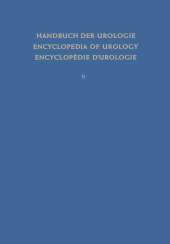 Neuerscheinungen 2012Stand: 2020-01-07 |
Schnellsuche
ISBN/Stichwort/Autor
|
Herderstraße 10
10625 Berlin
Tel.: 030 315 714 16
Fax 030 315 714 14
info@buchspektrum.de |

B. Fey, F. Heni, A. Kuntz
(Beteiligte)
Physiologie und Pathologische Physiologie / Physiology and Pathological Physiology / Physiologie Normale et Pathologique
Softcover reprint of the original 1st ed. 1965. 2012. xx, 1010 S. XX, 1009 pp. (273 pp. in German, 50 p
Verlag/Jahr: SPRINGER, BERLIN 2012
ISBN: 3-642-46020-8 (3642460208)
Neue ISBN: 978-3-642-46020-3 (9783642460203)
Preis und Lieferzeit: Bitte klicken
Physiology of the kidney.- A. Historical note.- B. Anatomy of the kidney as related to function.- I. Arteries.- II. Vas afferens.- III. Glomerulus.- 1. Glomerular capillary tuft.- 2. Glomerular membranes.- IV. Vas efferens and veins.- V. Vascular smooth muscle.- VI. Interstitial fluid space and lymphatics.- VII. Tubular system.- 1. Bowman´s capsule.- 2. Proximal tubule.- 3. Thin segment.- 4. Distal tubule.- 5. Collecting ducts.- VIII. Nephron populations.- 1. Cortical nephrons.- 2. Juxtamedullary nephrons.- 3. Glomerulotubular balance.- 4. Medulla as an accumulating unit.- IX. Renal nerves.- C. Renal hemodynamics.- I. Renal blood flow.- 1. Intrarenal pressures.- a) Glomerular capillary pressure.- b) Interlobular and arcuate venous pressure.- c) Renal interstitial pressure.- d) Intratubular pressures.- 2. Renal vascular resistance.- 3. Blood viscosity, intrarenal hematocrit, blood volume and transit times.- a) Viscosity.- b) Renal blood volume.- c) Transit times of red cells and plasma.- d) Renal hematocrit.- 4. Blood pressure-flow relationships and autoregulation.- 5. Intrarenal shunts.- 6. Summary of factors influencing the renal blood flow in the isolated or semiisolated kidney.- a) Pressures.- b) Temperature.- c) Hematocrit.- d) Renal nerves.- II. Glomerular filtration.- 1. Evidence supporting the theory of filtration.- 2. The glomerular membranes.- 3. Theoretical descriptions of filtration.- 4. Colloid osmotic pressure.- 5. Filtration pressure.- 6. Autoregulation of filtration.- 7. Variation in filtration.- 8. Filtration fraction.- III. Lymph flow.- IV. Renal hemodynamics in physiological states.- 1. Terminology and measurement.- 2. Basal values.- 3. Effects of age.- 4. Diurnal variation.- 5. Diet.- 6. Exercise.- 7. Pregnancy.- 8. Emotional stress and pain.- V. Renal hemodynamics in pathological states.- 1. Effects of anesthesia.- 2. Effects of various drugs.- a) Sympathomimetic amines.- b) Renin and angiotensin.- c) Depressor drugs.- d) Reserpine.- e) Pyrogens.- f) Xanthines.- g) Histamine, serotonin, atropine.- h) Vasopressin and oxytocin.- 3. Acute and chronic fluid loading and depletion.- a) Acute loading with colloidal solutions (plasma, albumin etc.).- b) Acute loading with colloid-free fluids.- c) Chronic fluid loading.- d) Acute blood sequestration.- e) Chronic fluid depletion.- 4. Congestive heart failure.- 5. Anoxia.- 6. Anemia and polycythemia.- 7. Hypertension.- 8. Toxemia of pregnancy.- 9. Cirrhosis.- 10. Nephrosis.- 11. Hyper- and hypothyroidism.- 12. Adrenal cortex and anterior pituitary.- 13. Gonadal hormones: testosterone and estradiol.- 14. Ureteral and abdominal pressure.- 15. Effect of temperature.- D. Tubular transport.- I. Classification of transport processes.- 1. Energetics.- 2. Titration curves.- II. Anatomical location of transport processes.- III. Tubular secretion of acids and bases.- 1. Transport of aromatic acids.- a) General properties.- b) Metabolism of aromatic acid transport.- c) Normal values of diodrast and PAH transport in man.- d) Metabolic and other influences on PAH and diodrast transport in the intact kidney.- e) Excretion of specific aromatic acids.- ?) Phenolsulfonphthalein (PSP, phenol red).- ?) Penicillin.- ?) Iodinated compounds.- ?) Conjugates.- ?) Probenecid and carinamide.- ?) Chlorothiazide.- 2. Transport of uric acid.- 3. Transport of creatinine.- 4. Transport of organic bases.- 5. Excretion of tissue permeable weak acids and bases.- a) General considerations.- b) Tissue-permeable weak acids.- ?) Barbiturates.- ?) Salicylate.- ?) p-aminosalicylic acid.- ?) Acetazoleamide.- c) Tissue-permeable weak bases.- IV. Tubular reabsorption of organic compounds.- 1. Sugars.- a) Glucose.- ?) General considerations.- ?) Normal values of glucose transport in man.- ?) Metabolic and other influences on glucose Tm.- ?) Renal glucosuria.- ?) Phlorhizin.- b) Other sugars: fructose, galactose, xylose, sucrose, raffinose.- 2. Amino acids.- 3. Aliphatic acids: ascorbic, acetoacetic, citric,


